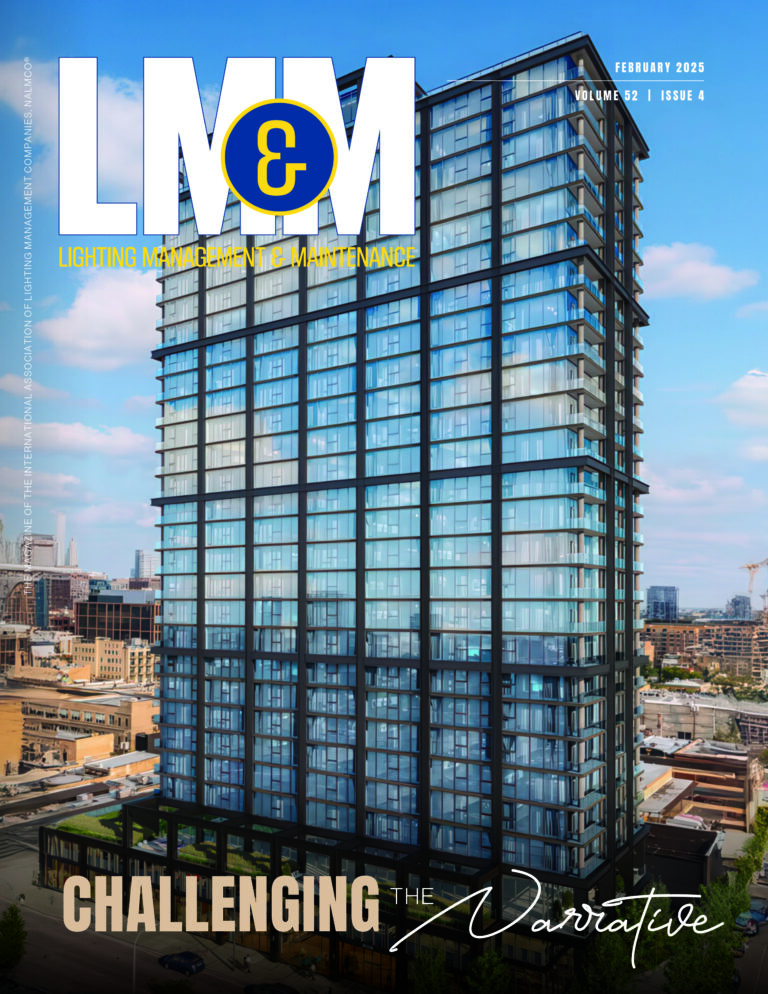Mark Lien of OSRAM Sylvania spoke on “Illuminating the Future of Lighting.” In addition to Mark’s work with OSRAM Sylvania and IES, he is a member of the Board of Directors of the National Lighting Bureau. Your humble editor will sit down with that Board in an on-camera interview later this week to discuss the same subject in detail.
Below are the key points of Mark’s talk:
- The industry is shifting away slightly from the importance of energy efficiency. Previously, lighting consumed up to 40% of the energy used in office lighting, now it is about 26%. This success opens the door to now improve quality, which went off the radar screen as the industry focused on eliminating every watt possible.
- Of ten leading organizations that affect our industry, seven are less than five years old.
- There will be more of an emphasis on connectivity.
- Our industry is focused now on how luminaries and components physically connect and how the speak to each other through communication protocols and software. Their is heightened concern about the quality of light in terms of color accuracy, circadian rhythm and other health concerns, even sacrificing efficiency for better quality.
- The new California LED Lamp Quality Specification has CRI requirement for utility rebates for California of a minimum 90 CRI. This improvement in CRI will trade quality for lumens as 90 CRI LED lamps have lower lumens per watt.
- Title 24 is now adopting BUG systems. Title 24 will has dual requirements of photo control and automatic scheduling control. ASHRAE only requires one. Title 24 will also require luminaires mounted at 24 feet or lower to be controlled by motion sensors that dim to 40% to 80% when area is unoccupied.
- Ashrae 2010 will be the Federal minimum energy standard on 18 OCT. It is about 18.5% more restrictive in energy consumption than the current Federal standard. Today the trigger for meeting the standard is if a site upgrades 50% of their lighting, they will have to meet the new ASHRAE requirement. The new rule will drop to 10%.
- Parking Garages will have mandatory daylighting zones in the new ASHRAE requirement.
- Facade and Landscape lighting will have to be turned off after midnight or close of business.
- Signage to be reduced 30% late in the evenings or when an area is unoccupied.
- The source of energy is changing. In the US, almost 25% of new electrical generating capacity installed in last the six months is considered ‘renewable’ such as solar, wind and biomass.
- Globalization of light fixtures has not really happenned. It has occurred in lamps, measuring equipment and even light meters (flip a switch to toggle between LUX and footcandles.) Many of the large fixture manufacturers in Europe and Asia do not compete in North America and our large luminaire companies do relatively little business outside of the US market. There is a new trade agreement proposal called the Transatlantic Trade and Investment Partnership, which the European Union and the Obama administration support. This proposal will reduce or eliminate all tariffs between EU and US and seeks to harmonize standards and regulations. This should open floodgates for EU and Asia to bring their products to the US and vice-versa. This is a market shift that would be unprecedented.
- UL now provides testing and labeling for 40 different countries which can address the barrier of safety and hazard requirement differences.
- The 2013 Progress Report committee evaluated 225 submittals and accepted 141. Almost 80%% are LED related, 4.9% were control, 1.8% were MH source, 0% fluorescent luminaires, and 0% MH luminaires.
- Regarding penetration, about 2% of the streetlights in California are LED,
- By 2015, DOLED predicts that all the lighting (lumen hours) in the US will be 9.5% LED.
- The two main barriers for LED adoption are 1) High cost of LEDs; 2. Savvy buyers know luminaires will be brighter and less expensive next year, so they wait. To counter the above phenomenon, Citibank, distributors and other lenders are leasing their lighting. South Korea has implemented a campaign called “Rent an LED” for municipalities to overcome the above the factors.
- There is still an oversupply of LEDs. It is getting worse as more companies gear up production in anticipation of the increased sales.
- There are products that have coupled OLEDs with wireless AC.
- Lighting helps the ROI for smart grid because it typically offers the fastest ROI. The value of lighting retrofits can often jump-start smart grid technology. It can be the gateway drug to accelerate smart grid technology.
- Look for brain-sensing controls. If you can plug it in, you can now control with your brain activity.
- The development of printed technology using ink jet printers with conductive ink will have a dramatic impact. Today, Light sensors can be printed on Mylar. NASA is doing this now and Lawrence Berkeley Labs is printing transistors on film.
- The CLTC is working on an adaptive smart home project that demonstrates intuitive, adaptive technology. The color could shift according to circadian rhythms. There are now tracking chips for indoors which are very low cost and can go inside of a smartphone or even embedded in skin to track your movements and potentially individual preferences with a building.
- Nano techology is having an impact. Nano means one billionth of a meter in size, and there are photo receptors and quantum dots that use this now in lighting. Taiwan has a job, which uses nano particles in trees to light the roadway. There is a concern that these nano particles could be absorbed in skin pores so safety concerns must be addressed.



